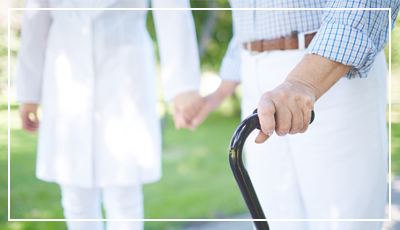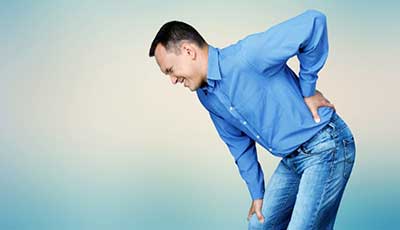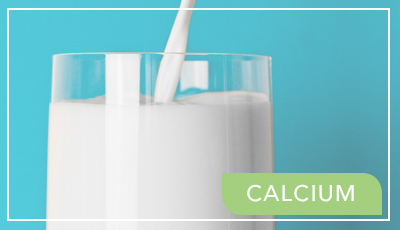



Osteoporosis: “A silent bone thief”
Osteoporosis is a pathology affecting the skeleton, which leads to its progressive weakness and to exposure to a high risk of fractures, even following minor bruises. The most involved bones in osteoporosis injuries are the femur and wrist joint; the spine is involved when the disease is severe and vertebral fractures occur.
There are two kinds of osteoporosis:

The osteoporosis risk factors are multiple and mostly due to other diseases. Initially Osteoporosis begins with an impairment of bone cells balance. The osteoblasts are bone cells able to build up new bone tissue; the osteoclasts are bone cells that able to disrupt it.The balance between these cells causes the building of new bone tissue or its loss. If the osteoclasts are more active than the osteoblasts, the skeleton becomes weaker and it is exposed to a major risk of fracture.
Some risk factors increase the likelihood of developing osteoporosis:
Osteoporosis is an asymptomatic disease, in fact it is named “silent disease”; the patient does not feel any signs other than pain when the skeletal injury occurs. In osteoporotic patients small traumas or contusions cause bone fractures. The patient often does not know that they suffer from this disease until a spine collapse causes a persistent back pain. In these patients small trauma could cause femoral fractures and falls when getting up from a sitting position. Typical osteoporotic signs are a stature reduction and kyphosis.
As in the major gradual diseases early diagnosis is essential. The measure of bone mass is called Moc which is a simple test giving an evaluation of the bone status and of the risk of fractures.
During menopause all women should take care of vitamin D, Calcium and bone micronutrients intake under medical supervision. A healthy diet includes mineral salts and micronutrients for bone such as Magnesium, Copper, Boron, Manganese and Zinc; a healthy diet preserves the bone mass balance over time. Physical exercise, such as walking in the sun preserves bone flexibility; in fact it is known that fitter patients have more balance and muscle strength reducing the risk of falls and fractures.
Lifestyle is essential for osteoporosis: no smoking, healthy diet, exercise, vitamin D supplementation under medical supervision, Calcium and bone micronutrients intake are essential. Following medical guidelines the therapy of severe or medium Osteoporosis includes drugs for bone regeneration, or drugs to block the extra activity of osteoclasts.
Lifestyle and diet are essential as an adequate intake of Calcium, protein, and bone micronutrients as follow:
Silicon:
It is abundant in whole grains (such as brown rice), beer, and in some kinds of water. Silicon is essential for bone growth because it is involved in Calcium storage within the bone. Silicon is found in bones, skin, hair, blood vessels (5). A rich Silicon diet is linked to an improved bone mass.

Magnesium:
More than 60% of the body’s entire magnesium levels is found in the skeleton, therefore a lack of this mineral is associated with osteoporosis development and an increased serum PTH (parathormone) which affects bone metabolism balance causing skeleton weakness. The main food sources are dried fruit, legumes, banana, and green vegetables.
Boron:
It is a micronutrient that is involved in vitamin D metabolism and it improves bone mineralization. Adequate Boron intake supports bone microarchitecture and strength. It is abundant in vegetables, fruit, and hazelnuts.


Zinc:
It affects skeleton strength and flexibility and it has an anabolic effect on bones. It has been recently shown that postmenopausal osteoporotic women have less serum Zinc level than healthy women do. It is estimated that 25% of the global population risk having a lack of Zinc intake. Teenagers and post-menopausal women are especially at risk. Food sources are meat and fish while grains, legumes and seeds contain differing amounts. Some substances block Zinc absorption, such as vegetable phytate, which is should be considered especially for vegans or vegetarians.
Manganese:
It is associated with bone formation and under physiological concentration has a bone protection effect. The food sources are grains and wine.


Copper:
It plays an important role in skeleton growth and development; moreover Copper helps bone quality and strength in adults. It is a co-factor of an enzyme, which enables the removal of free radicals from bone tissue, it also prevents osteoclastic activation and therefore bone demolition induced by oxidative stress.
Finally vitamin D is essential for Calcium absorption and bone fixation. Normal serum D vitamin level can be measured and kept under control. For low serum D vitamin level its supplementation is recommended. This vitamin is produced by exposure of skin to the sun ant its food sources are: salmon, tuna, mackerel, herring or fat cheese and butter.
Bone health food supplements studied to ensure the balanced intake of Magnesium, Calcium, Silicon, Manganese, Zinc and Boron are available in the market; see food supplements for bone health.



